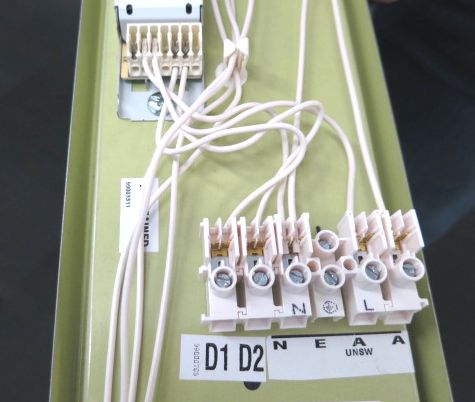I am often asked why the DALI communication bus (the DALI Line) must use double insulated mains wiring.
Searching available documentation, it’s difficult to find hard information to answer this specific question. A long, long time ago the predecessor to the DALI Alliance published a DALI Manual which stated:
“The isolation of the digital interface corresponds to the requirements of the base isolation. Tests are executed under the IEC 60 928 standard. Thus, SELV (Safety Extra Low Voltage) is not granted. The digital interface connecting leads can be wired jointly with the mains supply leads (e.g. 230 V), always provided that the isolation strength (2 x base isolation) will be observed.“
Some DALI Control Gear manufacturers include wording in their installation document or data sheets like: ‘The network cable must be mains-rated’ or ‘The DALI signal is not SELV. The installation instructions for low voltage therefore apply’
Hardly Crystal Clear – So What Does This Mean?
Many control systems communication buses are run in SELV (Safety Extra Low Voltage) or PELV (Protected Extra Low Voltage) which require >4 kV isolation from Mains (LV).
DALI is different. Although the nominal DALI Line voltage range is 9.5 V dc – 22.5 V dc, DALI wiring has only Basic Isolation from mains.
The standard IEC 611240 defines this property as FELV (Functional Extra Low Voltage), meaning the nominal voltage falls within the ELV range but the isolation is insufficient to protect against a single fault.
That’s great technical mumbo jumbo, but what is really going on?

Within a typical DALI luminaire, the wiring between the terminal block and the control gear is typically run in single insulated wire and terminated in push in/punch down style IDC terminal blocks.
In either of these cases a single fault (failure of insulation) could put 240 V ac on to the DALI Line.
Like the links of a chain: the weakest link determines failure.
Luminaires from many manufacturers could be used on a DALI line, so even if some manufacturers were to build Control Gear and Luminaires with SELV isolation – the weakest link determines the failure.
To manage this issue – DALI wiring is considered to have only single insulation from mains (also known as Basic Isolation), and so for all practical purpose DALI should be considered to be at Mains potential. To protect people against electrical shock hazards: double insulated Mains (LV) wiring must be used.
There Are Some Other Aspects To Consider:
- Using mains cable for DALI allows the DALI Line wiring to run in the same bundle, tray or conduit as mains wiring without segregation.
- TREAT DALI AS IF IT IS MAINS: Before working on the wiring of a DALI Line, isolate all lighting circuit 240 V supplies to all fittings connected to that DALI Line and also to any DALI input and power supply units connected to that DALI line.
- All DALI control devices (for example: switches and sensors ) that are connected to a DALI Line must be mounted outside the clearance zones from taps, sinks, and wet areas. Typically this applies to Kitchens, Laundries and Bathrooms.